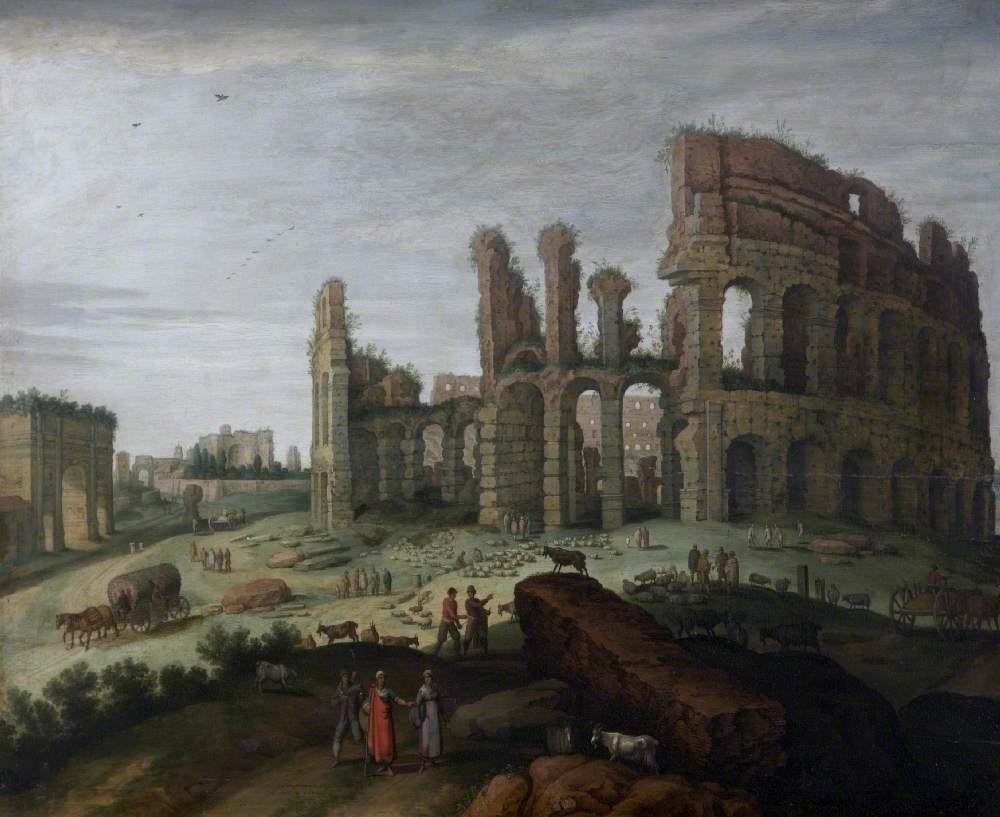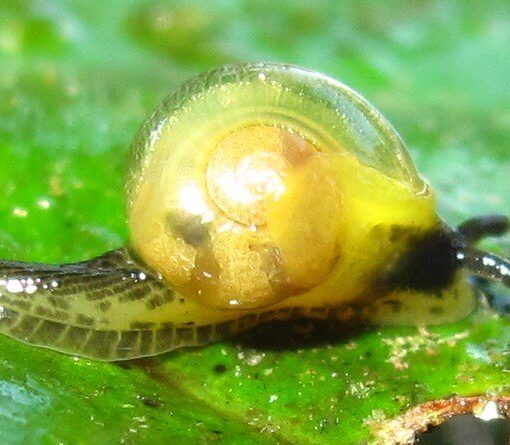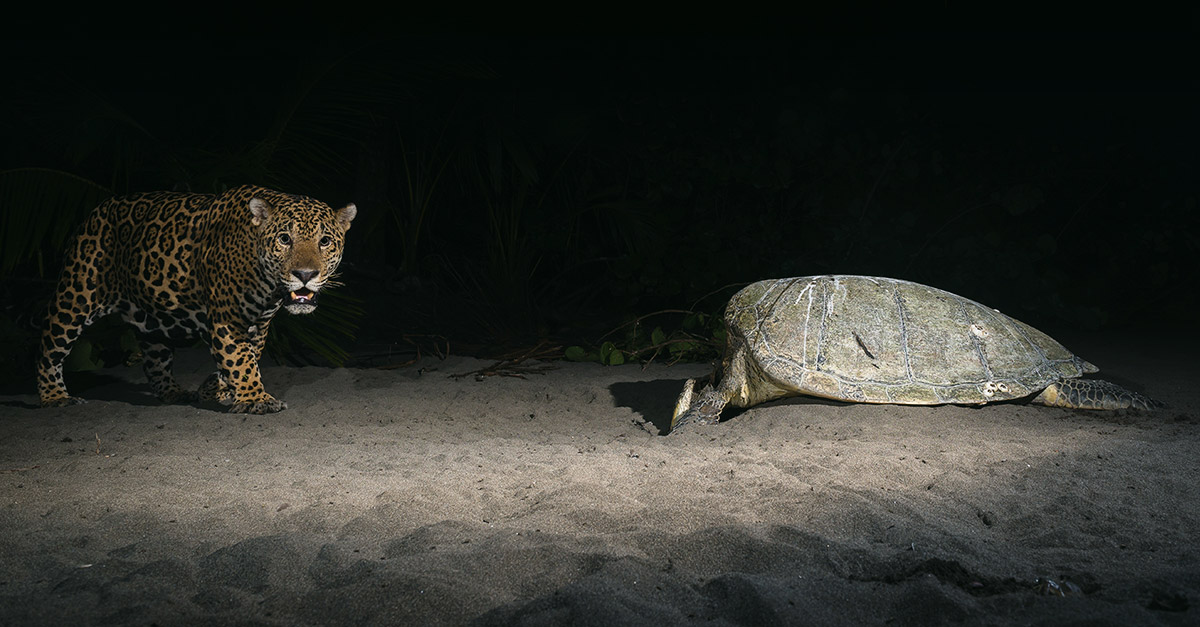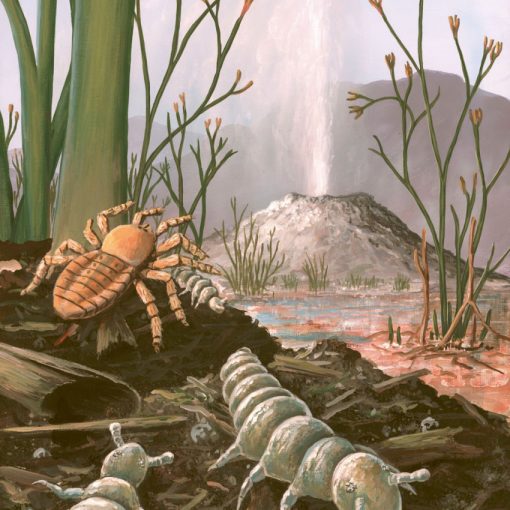Author: Julián Monge Nájera, Ecologist and Photographer
The reenactments of naval battles, gladiator fights, and hunting of wild animals are not the only dramas in the Roman Colosseum. Ignored by tourists and scientists alike, the coliseum snails have been fighting their own battles for thousands of years.

Almost no one notices the small snails that are attached to the ancient walls of the Roman Colosseum and other historical monuments of the Eternal City. They are equally ignored by tourists and biologists. But the Polish zoologist Stefan Witold Alexandrowicz did notice, and he has left us a nice article on the malacofauna of the Roman ruins¹.
Why are snails so frequent in these ruins?
Basically, for two reasons, because they find everything they need, and because the resources are shared. On the one hand, the ruins have rich and varied vegetation that serves as food and protects them from the weather and enemies. In addition, the stone with which the coliseum (actually called Circus Maximus), the forum and other Roman buildings were built, are rich in calcium carbonate, necessary for the construction of the shells¹. On the other hand, the two dominant species specialize, one in sunny microhabitats, and the other in shaded microhabitats, so that they do not compete directly for resources, and both thrive.
Snails are frequent on tourist trails, in vegetation, and on stones. Doctor Alexandrowicz found eight species in the coliseum, 57% specializing in dry environments¹.
The dominant species in the coliseum are fascinating, the «small snail» Cernuella virgata, and the «hairy snail», Xerotricha conspurcata.
The small snail is named for the Spaniards, who eat them in «tapas» along with another, larger, species.
This small snail has a disadvantage: when the humidity drops, it forms large groups and enters a state of numbness.

Originally, being in groups during the most defenseless period had an evolutionary advantage: if a lizard or mouse meets a sleeping snail, there is a nearly 100% chance that just that snail will be eaten. But if 100 are found together, the probability of being the chosen one drops spectacularly to 1/100 and therefore natural selection favored grouping.
But just that advantage, which worked for millions of years, was the cause of trouble for this snail because when humans discovered that it was easy to get many each time, they decided that it was worth looking for them to prepare a good soup or some other recipe of the many that are made with abundant snails. Probably the Romans ate them, and perhaps they took the custom to Spain, where they are still on the menu; or perhaps the Spaniards discovered the tasty meal without the influence of Roman cuisine.
In any case, the snail has its revenge. Many carry a parasite, the worm Brachylaima cribbi. This worm, which infected snails long before Rome was an empire, begins its cycle in another snail, Theba pisana, and from there it passes to the small snail and, following the chain, to the people who eat it. And if no parishioner eats them, the parasites move to mice, birds, and reptiles to continue the cycle.
The person who eats the raw or poorly cooked snail acquires the parasite and releases it in their feces, from where it passes to other snails and restarts the cycle.
The effects range from abdominal pain and diarrhea to dangerous changes in heart rate, but 90% of people survive².
The other small inhabitant of the colosseum, the hairy snail, is fascinating not only because it is hairy, which can be said of a few snails, but also because it uses love darts³.

Love darts look like arrows of calcium that the individual who will act as a male inserts in his partner to make it open the vagina; for this, the dart carries hormones.
For millennia, this violent act of love has been repeated millions of times in the coliseum, without anyone knowing. Nobody, of course, except for us: the reproductions of naval battles, the gladiator fights, and the hunting of animals are not the only dramas that have been lived in the colosseum³.
Originally published in Blog Biología Tropical: 16 july 2020
REFERENCES
¹ Alexandrowicz, S.W. (2012). Malacofauna of the Forum Romanum and adjacent ancient Roman monuments. Folia Malacologica, 20(4). 289-293
² Butcher, A.R., & Grove, D.I. (2001). Description of the life-cycle stages of Brachylaima cribbi n. sp. (Digenea: Brachylaimidae) derived from eggs recovered from human faeces in Australia. Systematic Parasitology, 49(3), 211-221.
³ Kerney, M. P., Cameron, R. A. D., & Jungbluth, J. H. (1983). Die Landschnecken Nord- und Mitteleuropas. Hamburgo & Berlin: Paul Parey.





Una idea sobre “The smallest gladiators in the Roman Colosseum”
mexican mail order pharmacies: buying prescription drugs in mexico – mexican border pharmacies shipping to usa